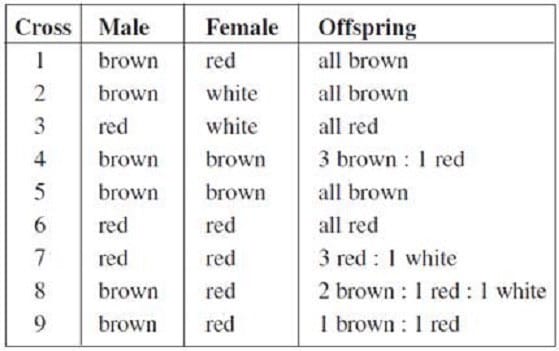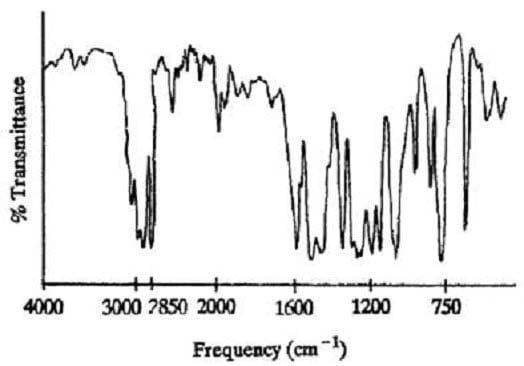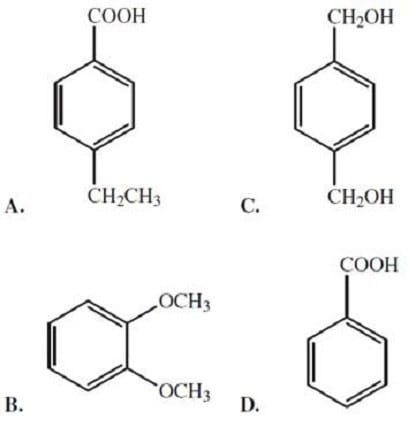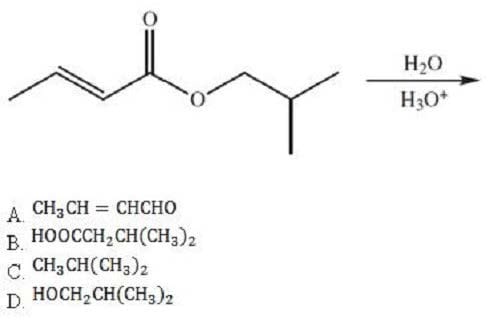Exam Details
Exam Code
:MCAT-TESTExam Name
:Medical College Admission Test: Verbal Reasoning, Biological Sciences, Physical Sciences, Writing SampleCertification
:Medical Tests CertificationsVendor
:Medical TestsTotal Questions
:812 Q&AsLast Updated
:Apr 16, 2025
Medical Tests Medical Tests Certifications MCAT-TEST Questions & Answers
-
Question 561:
Alleles are created when a single gene undergoes several distinct mutations. These alleles may have different dominance relationships with one another; for example, there are three alleles coding for the human blood groups, the IA, IB, and i alleles. Both the IA and IB alleles are dominant to the i allele, but IA and IB are codominant to each other.
A multiple-allele system has recently been discovered in the determination of hair coloring in a species of wild rat. The rats are found to have one of three colors: brown, red, or white. Let B = the gene for brown hair; b = the gene for red hair; and w = the gene for white hair. The results from nine experimental crosses are shown below. The males and females in Crosses 1, 2, and 3 are all homozygous for hair color.

Based on the experimental results, what is the genotype of the male in Cross 6?
A. bw
B. bb
C. bw or bb
D. Bb or bw
-
Question 562:
A student was given a sample of an unknown liquid and asked to determine as much as possible about its structure. He was told that the compound contained only carbon, hydrogen, and oxygen, and had only one type of functional group. The student found its boiling point to be 206癈. Using mass spectroscopy, he determined its molecular weight to be 138 g/mol. Finally, he took the infrared spectrum of the compound, which is shown below.

From this spectrum, the student quickly reached a conclusion about the functional group. He then turned his attention to the fingerprint region of the compound, which generally has a complicated pattern of peaks that are determined by the structure of the hydrocarbon portion of a molecule. The student decided that the large peak at 750 cm-1 must indicate that this was a disubstituted aromatic compound.
Assuming that all of the student's deductions were correct, which of the following could be the structure of the unknown compound?

A. Option A
B. Option B
C. Option C
D. Option D
-
Question 563:
A student was given a sample of an unknown liquid and asked to determine as much as possible about its structure. He was told that the compound contained only carbon, hydrogen, and oxygen, and had only one type of functional group. The student found its boiling point to be 206. Using mass spectroscopy, he determined its molecular weight to be 138 g/mol. Finally, he took the infrared spectrum of the compound, which is shown below.

From this spectrum, the student quickly reached a conclusion about the functional group. He then turned his attention to the fingerprint region of the compound, which generally has a complicated pattern of peaks that are determined by the structure of the hydrocarbon portion of a molecule. The student decided that the large peak at 750 cm-1 must indicate that this was a disubstituted aromatic compound.
The overlapping set of peaks near 3000 cm-1 includes one peak at 2850 cm-1. What type of functional group could this indicate?
A. Methyl
B. Phenol
C. Carboxyl
D. Aldehyde carbonyl
-
Question 564:
Which of the following products may be formed in the reaction below?

A. Option A
B. Option B
C. Option C
D. option D
-
Question 565:
Growth hormone decreases the sensitivity of cellular receptors to insulin. Therefore, a patient with acromegaly, which is caused by the oversecretion of growth hormone, would be expected to have:
A. a low blood glucose concentration.
B. a high blood glucose concentration.
C. a decreased urine volume.
D. a decreased cardiac output.
-
Question 566:
A biochemist grows two cultures of yeast -- one aerobically and the other anaerobically -- and measures the amount of ATP produced by each culture. He finds that the aerobically-grown yeast produce about 18 times as much ATP as the anaerobically-grown yeast. These observations are consistent with the fact that in the aerobically grown yeast:
A. oxygen is converted into ATP.
B. oxygen is necessary to convert glucose into pyruvate.
C. oxygen is the final electron acceptor of the respiratory chain.
D. oxygen is necessary for the reduction of pyruvate into lactate.
-
Question 567:
A certain chemical is found to inhibit the synthesis of all steroids. The synthesis of which of the following hormones would NOT be affected when a dose of this chemical is administered to a laboratory rat?
A. Cortisol
B. Aldosterone
C. Epinephrine
D. Testosterone
-
Question 568:
Four major blood types exist in the human ABO blood system: types A, B, AB, and O; and there are three alleles that code for them. The A and B alleles are codominant, and the O allele is recessive. Blood types are derived from the presence of specific polysaccharide antigens that lie on the outer surface of the red blood cell membrane. The A allele codes for the production of the A antigen; the B allele codes for the production of the B antigen; the O allele does not code for any antigen. While there are many other antigens found on red blood cell membranes, the second most important antigen is the Rh antigen. Rh is an autosomally dominant trait coded for by 2 alleles. If this antigen is present, an individual is Rh+; if it is absent, an individual is Rh-. For example, a person with type AB blood with the Rh antigen is said to be AB+.
These antigens become most important when an individual comes into contact with foreign blood. Because of the presence of naturally occurring substances that closely mimic the A and B antigens, individuals who do not have these antigens on their red blood cells will form antibodies against them. This is inconsequential until situations such as blood transfusion, organ transplant, or pregnancy occur.
Erythroblastosis fetalis is a condition in which the red blood cells of an Rh+ fetus are attached by antibodies produced by its Rh- mother. Unlike ABO incompatibility, in which there are naturally occurring antibodies to foreign antigens, the Rh system requires prior sensitization to the Rh antigen before antibodies are produced. This sensitization usually occurs during the delivery of an Rh+ baby. So while the first baby will not be harmed, any further Rh+ fetuses are at risk. The Coombs tests provide a method for determining whether a mother has mounted an immune response again her baby's blood. The tests are based on whether or not agglutination occurs when Coombs reagent is added to a sample. Coombs reagent contains antibodies against the anti-Rh antibodies produced by the mother. The indirect Coombs test takes the mother's serum, which contains her antibodies but no red blood cells, and mixes it with Rh+ red blood cells. Coombs reagent is then added. If agglutination occurs, the test is positive, and the mother must be producing anti-Rh antibodies. The direct Coombs test mixes the baby's red blood cells with Coombs reagent. If agglutination occurs, the test is positive, and the baby's red blood cells must have been attacked by its mother's anti-Rh antibodies.
A medical student suggested giving Rh- mothers of Rh+ fetuses a specific exogenous substance prior to delivery to prevent an immune response. Which of the following substances would likely be the safest and most effective?
A. Rh antigen
B. An immunosuppressive drug
C. Anti-Rh antibody
D. Iron pills
-
Question 569:
Four major blood types exist in the human ABO blood system: types A, B, AB, and O; and there are three alleles that code for them. The A and B alleles are codominant, and the O allele is recessive. Blood types are derived from the presence of specific polysaccharide antigens that lie on the outer surface of the red blood cell membrane. The A allele codes for the production of the A antigen; the B allele codes for the production of the B antigen; the O allele does not code for any antigen. While there are many other antigens found on red blood cell membranes, the second most important antigen is the Rh antigen. Rh is an autosomally dominant trait coded for by 2 alleles. If this antigen is present, an individual is Rh+; if it is absent, an individual is Rh-. For example, a person with type AB blood with the Rh antigen is said to be AB+. These antigens become most important when an individual comes into contact with foreign blood. Because of the presence of naturally occurring substances that closely mimic the A and B antigens, individuals who do not have these antigens on their red blood cells will form antibodies against them. This is inconsequential until situations such as blood transfusion, organ transplant, or pregnancy occur.
Erythroblastosis fetalis is a condition in which the red blood cells of an Rh+ fetus are attached by antibodies produced by its Rh- mother. Unlike ABO incompatibility, in which there are naturally occurring antibodies to foreign antigens, the Rh system requires prior sensitization to the Rh antigen before antibodies are produced. This sensitization usually occurs during the delivery of an Rh+ baby. So while the first baby will not be harmed, any further Rh+ fetuses are at risk.
The Coombs tests provide a method for determining whether a mother has mounted an immune response again her baby's blood. The tests are based on whether or not agglutination occurs when Coombs reagent is added to a sample. Coombs reagent contains antibodies against the anti-Rh antibodies produced by the mother. The indirect Coombs test takes the mother's serum, which contains her antibodies but no red blood cells, and mixes it with Rh+ red blood cells. Coombs reagent is then added. If agglutination occurs, the test is positive, and the mother must be producing anti-Rh antibodies. The direct Coombs test mixes the baby's red blood cells with Coombs reagent. If agglutination occurs, the test is positive, and the baby's red blood cells must have been attacked by its mother's anti-Rh antibodies.
A woman who has never been pregnant has type B- blood. Which of the following antibodies would you expect to find in her serum?
A. Anti-B antibody
B. Anti-A antibody
C. Anti-Rh antibody
D. Both anti-A and anti-Rh antibodies
-
Question 570:
Four major blood types exist in the human ABO blood system: types A, B, AB, and O; and there are three alleles that code for them. The A and B alleles are codominant, and the O allele is recessive. Blood types are derived from the presence of specific polysaccharide antigens that lie on the outer surface of the red blood cell membrane. The A allele codes for the production of the A antigen; the B allele codes for the production of the B antigen; the O allele does not code for any antigen. While there are many other antigens found on red blood cell membranes, the second most important antigen is the Rh antigen. Rh is an autosomally dominant trait coded for by 2 alleles. If this antigen is present, an individual is Rh+; if it is absent, an individual is Rh-. For example, a person with type AB blood with the Rh antigen is said to be AB+.
These antigens become most important when an individual comes into contact with foreign blood. Because of the presence of naturally occurring substances that closely mimic the A and B antigens, individuals who do not have these antigens on their red blood cells will form antibodies against them. This is inconsequential until situations such as blood transfusion, organ transplant, or pregnancy occur.
Erythroblastosis fetalis is a condition in which the red blood cells of an Rh+ fetus are attached by antibodies produced by its Rh- mother. Unlike ABO incompatibility, in which there are naturally occurring antibodies to foreign antigens, the Rh system requires prior sensitization to the Rh antigen before antibodies are produced. This sensitization usually occurs during the delivery of an Rh+ baby. So while the first baby will not be harmed, any further Rh+ fetuses are at risk.
The Coombs tests provide a method for determining whether a mother has mounted an immune response again her baby's blood. The tests are based on whether or not agglutination occurs when Coombs reagent is added to a sample. Coombs reagent contains antibodies against the anti-Rh antibodies produced by the mother. The indirect Coombs test takes the mother's serum, which contains her antibodies but no red blood cells, and mixes it with Rh+ red blood cells. Coombs reagent is then added. If agglutination occurs, the test is positive, and the mother must be producing anti-Rh antibodies. The direct Coombs test mixes the baby's red blood cells with Coombs reagent. If agglutination occurs, the test is positive, and the baby's red blood cells must have been attacked by its mother's anti-Rh antibodies.
Based on information in the passage, what does the reaction below represent?

A. Negative direct Coombs test
B. Positive direct Coombs test
C. Positive indirect Coombs test
D. Negative indirect Coombs test
Related Exams:
Tips on How to Prepare for the Exams
Nowadays, the certification exams become more and more important and required by more and more enterprises when applying for a job. But how to prepare for the exam effectively? How to prepare for the exam in a short time with less efforts? How to get a ideal result and how to find the most reliable resources? Here on Vcedump.com, you will find all the answers. Vcedump.com provide not only Medical Tests exam questions, answers and explanations but also complete assistance on your exam preparation and certification application. If you are confused on your MCAT-TEST exam preparations and Medical Tests certification application, do not hesitate to visit our Vcedump.com to find your solutions here.